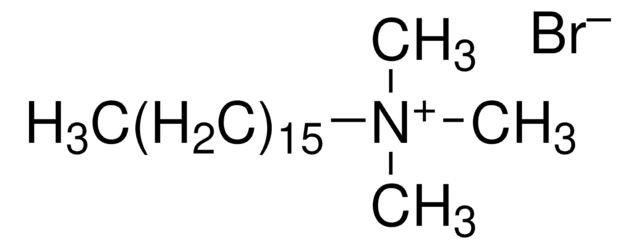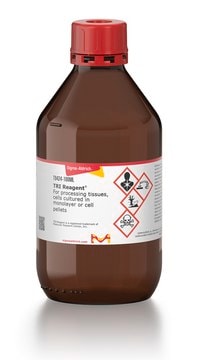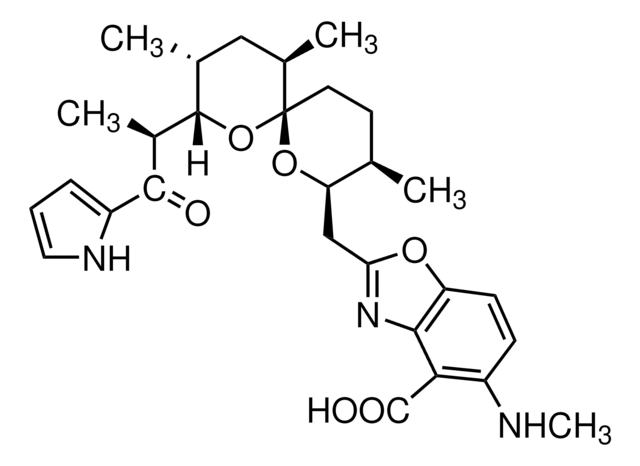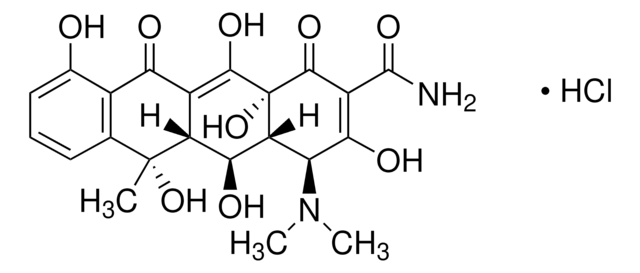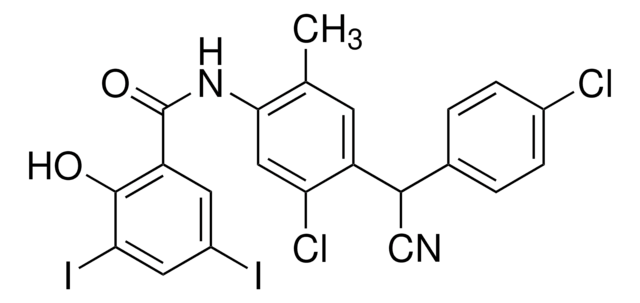Alle Fotos(1)
Wichtige Dokumente
R5628
Hae III from Haemophilus aegyptius
Restriction Enzyme
Anmeldenzur Ansicht organisationsspezifischer und vertraglich vereinbarter Preise
Alle Fotos(1)
About This Item
Empfohlene Produkte
Qualität
Molecular Biology
for molecular biology
Form
buffered aqueous glycerol solution
Konzentration
10,000 units/mL
Versandbedingung
wet ice
Lagertemp.
−20°C
Suchen Sie nach ähnlichen Produkten? Aufrufen Leitfaden zum Produktvergleich
Spezifität
Recognition sequence: 5′-GG/CC-3′
Ligation and recutting results: After 2-10-fold Hae III overdigestion of 1 μg λ DNA substrate, results in 100% cutting, >50% of fragments can be ligated, and >95% recut.
Heat inactivation: 80 °C for 20 minutes.
Ligation and recutting results: After 2-10-fold Hae III overdigestion of 1 μg λ DNA substrate, results in 100% cutting, >50% of fragments can be ligated, and >95% recut.
Heat inactivation: 80 °C for 20 minutes.
Anwendung
HaeIII is a restriction enzyme that is used in molecular biology methods to cleave DNA at the recognition site 5′-GG/CC-3′ to generate DNA fragments with blunt termini.
Sonstige Hinweise
Supplied with 10x Restriction Enzyme Buffer SM (B3158).
Comment: Inefficient for single-stranded DNA cleavage.
Hae III requires optimal reaction conditions in order to avoid star activity.
Hae III requires optimal reaction conditions in order to avoid star activity.
Physikalische Form
Solution in 20 mM Tris-HCl, pH 7.7, 0.1 mM EDTA, 400 mM NaCl, 10 mM 2-mercaptoethanol, 50% glycerol (v/v) at 4°C
Ähnliches Produkt
Lagerklassenschlüssel
10 - Combustible liquids
WGK
WGK 2
Flammpunkt (°F)
Not applicable
Flammpunkt (°C)
Not applicable
Hier finden Sie alle aktuellen Versionen:
Besitzen Sie dieses Produkt bereits?
In der Dokumentenbibliothek finden Sie die Dokumentation zu den Produkten, die Sie kürzlich erworben haben.
Stefano Fazi et al.
Environmental microbiology, 10(10), 2760-2772 (2008-07-23)
We studied the diversity, community composition and activity of the primary microbial colonizers of the water above freshly re-wetted sediments from a temporary river. Dried sediments, collected from Mulargia River (Sardinia, Italy), were covered with sterile freshwater in triplicate microcosms
Duplex regions in "single-stranded" phiX174 DNA are cleaved by a restriction endonuclease from Haemophilus aegyptius.
R W Blakesley et al.
The Journal of biological chemistry, 252(20), 7300-7306 (1977-10-25)
Beatrix Kotlan et al.
Journal of immunology (Baltimore, Md. : 1950), 175(4), 2278-2285 (2005-08-06)
The potential tumor-recognizing capacity of B cells infiltrating human breast carcinoma is an important aspect of breast cancer biology. As an experimental system, we used human medullary breast carcinoma because of its heavy B lymphocytic infiltration paralleled to a relatively
C Kessler et al.
Gene, 92(1-2), 1-248 (1990-08-16)
The properties and sources of all known class-I, class-II and class-III restriction endonucleases (ENases) and DNA modification methyltransferases (MTases) are listed and newly subclassified according to their sequence specificity. In addition, the enzymes are distinguished in a novel manner according
Cong Zhu et al.
Nucleic acids research, 41(4), 2455-2465 (2013-01-11)
Zinc-finger nucleases (ZFNs) have been used for genome engineering in a wide variety of organisms; however, it remains challenging to design effective ZFNs for many genomic sequences using publicly available zinc-finger modules. This limitation is in part because of potential
Unser Team von Wissenschaftlern verfügt über Erfahrung in allen Forschungsbereichen einschließlich Life Science, Materialwissenschaften, chemischer Synthese, Chromatographie, Analytik und vielen mehr..
Setzen Sie sich mit dem technischen Dienst in Verbindung.
